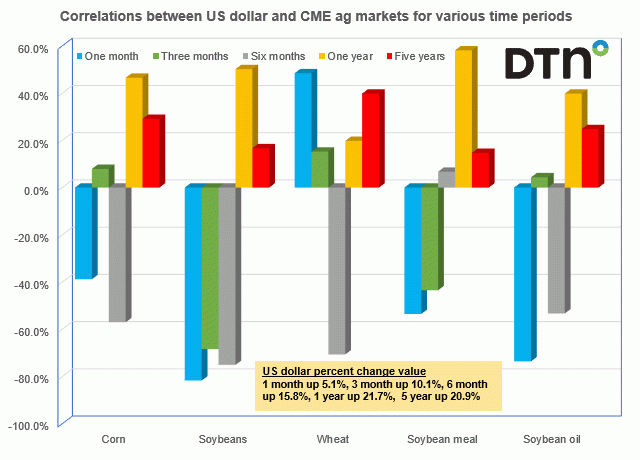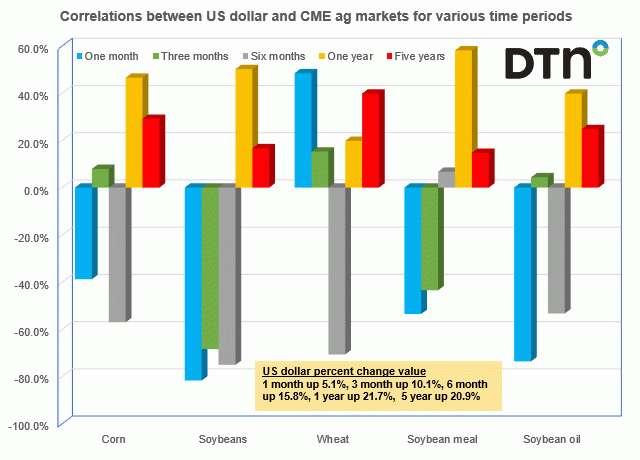Fundamentally Speaking
Corn, Soybean Yield Trends
Over the past few weeks there appears to be more talk that corn acreage may not increase very much at all next year based on ideas that the need for soybean oil and other vegoils for biodiesel purposes will enhance the value of soybeans relative to corn.
This is also occurring at a time when fertilizer prices of all varieties and makes are very expensive and that is a much greater cost input for corn than soybeans.
The choice to plant corn or soybeans besides rotational considerations involves calculating net returns per acre for each crop and part of that process requires understanding yield trends for both corn and soybeans and how each crop will respond to normal, subpar, or above average growing conditions.
Along these lines, this graphic shows the five, ten and 20-year average of the corn/soybean yield ratio for the top 15 producing states of both crops on the left-hand axis while the 20-year trend increase in yields is reported on the right-hand axis.
P[L1] D[0x0] M[300x250] OOP[F] ADUNIT[] T[]
To start we look at how corn yields have fared vs. soybean yields over the years looking at those states where the corn/soybean yield ratio has increased or decreased over time.
Kansas is an example of the latter where corn yields relative to soybean yields have dropped over the past two decades as the 20-year corn/bean ratio is 3.75, falling to 3.50 over the past ten years and then declining even more to 3.30 over the past five seasons.
The reason is that Kansas corn yield growth has been very modest to say the least increasing by a mere 0.46 bushels per acre (bpa) since 2002, the lowest of all 15 states and actually the only one where the average annual increase in soybean yields of 0.66 bpa exceeds that of corn.
The opposite situation is seen in North Dakota where corn yields relative to soybean yields have risen over the past two decades as the 20-year corn/bean ratio is 3.87, increasing to 3.95 over the past ten years and then rising even more to 4.21 over the past five seasons.
The reason is that North Dakota corn yield growth, even though it's the second lowest of all 15 states at 1.32 bpa per year, is well above the average bean yield increase since 2002 of 0.13 bpa per year, easily the lowest of the 15 states.
Other observations include Tennessee having the highest annual yield increases in corn at 3.25 bpa followed up by KY at 3.06.
For soybeans, yield growth has been most sustained in Illinois with the yield trending higher by 1.06 bpa per year since 2002 with KY and NE also doing well in this regard with yields trending upwards by 0.90 bpa per year.
Farmers in both Kentucky and Tennessee have to be pleased with how both corn and bean yields have performed quite admirably over time compared to other states that plant significant acreage to both crops.
(c) Copyright 2021 DTN, LLC. All rights reserved.






Comments
To comment, please Log In or Join our Community .